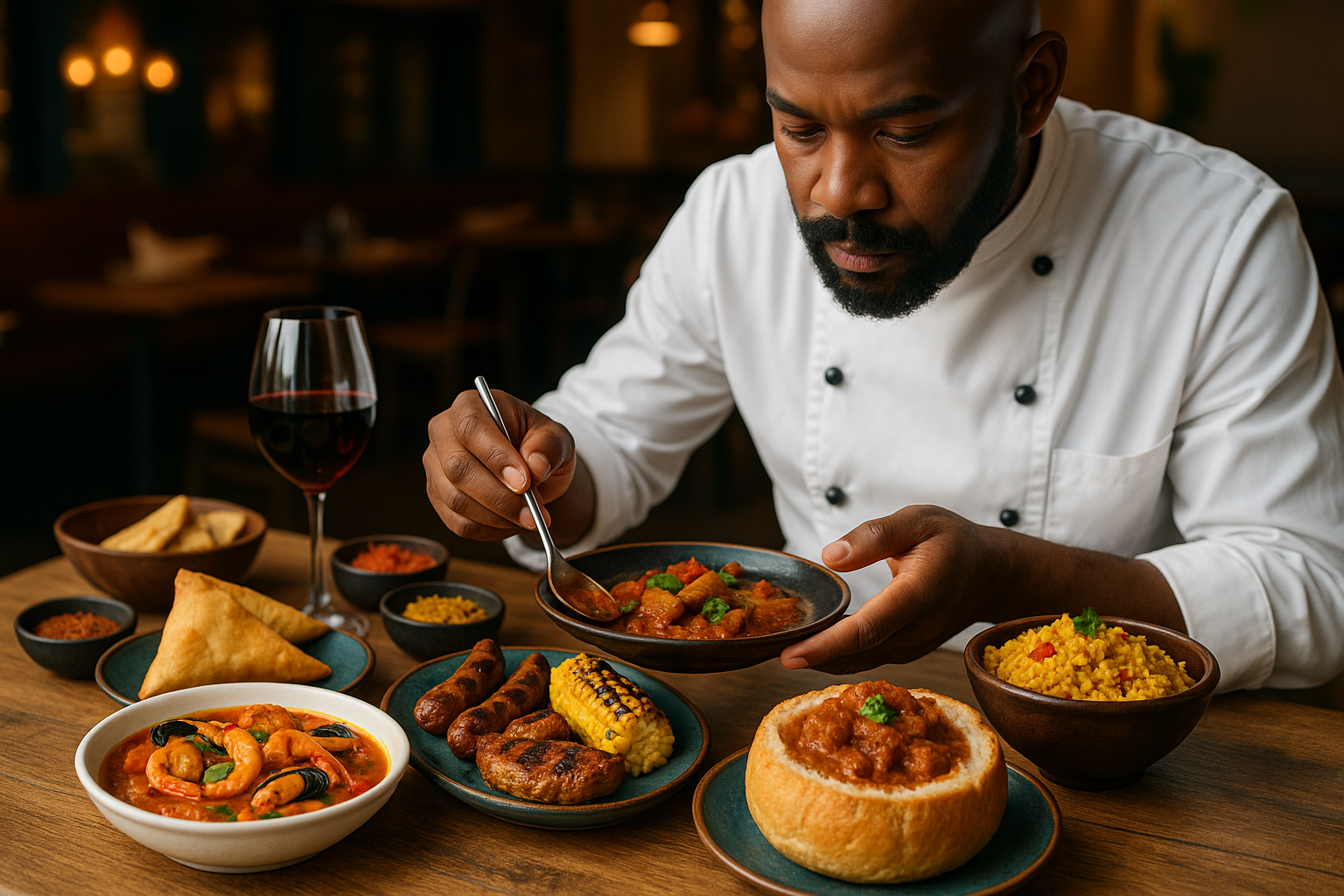Culinary Cinema: The Fusion of Food and Film
In the ever-evolving landscape of cinematic experiences, a captivating trend has emerged that tantalizes both the visual and gustatory senses. Culinary cinema, a unique blend of gastronomy and filmmaking, is redefining how audiences engage with movies. This innovative approach not only showcases the art of cuisine on screen but also incorporates real-time dining experiences that synchronize with the narrative, creating a multi-sensory journey that goes beyond traditional film viewing.

More Than Just Food on Film
While food has long been a subject of fascination in cinema, culinary cinema takes this relationship to new heights. It’s not merely about watching beautiful shots of dishes being prepared or consumed; it’s about creating a holistic experience that engages all the senses. In a typical culinary cinema event, viewers are served a series of carefully crafted dishes that correspond to the scenes unfolding on screen. The aromas, textures, and flavors of the food are designed to complement and enhance the emotional and narrative elements of the film, creating a synchronized sensory experience.
The Art of Culinary Storytelling
At the heart of culinary cinema lies the art of storytelling through food. Filmmakers and chefs work in close collaboration to develop narratives where cuisine plays a central role. These stories often explore themes of culture, memory, family, and identity, using food as a powerful metaphor and a vehicle for emotional connection. The films may range from documentaries about renowned chefs to fictional tales where pivotal moments revolve around meals. The accompanying menus are crafted to reflect the film’s themes, often featuring dishes that are integral to the plot or that evoke the mood and setting of specific scenes.
Technical Challenges and Innovations
Creating a successful culinary cinema experience presents unique technical challenges. Timing is crucial, as dishes must be prepared and served at precise moments to align with the on-screen action. This requires meticulous planning and coordination between the kitchen staff and the projection team. Some venues have developed sophisticated systems that synchronize food service with the film’s timeline, ensuring a seamless experience for the audience. Additionally, special consideration must be given to the dining environment, balancing the need for adequate lighting for eating with the desire to maintain the immersive atmosphere of the film.
Global Impact and Cultural Exchange
Culinary cinema has gained traction worldwide, becoming a fixture at international film festivals and spawning dedicated events in major cities. These gatherings serve as platforms for cultural exchange, allowing audiences to explore diverse cuisines and culinary traditions through the lens of cinema. For example, a Japanese film might be paired with a multi-course kaiseki meal, offering viewers a deep dive into Japanese culture through both visual and gustatory means. This cross-cultural aspect of culinary cinema has made it a powerful tool for fostering understanding and appreciation of different gastronomic heritages.
The Future of Flavor on Film
As technology continues to advance, the possibilities for culinary cinema are expanding. Virtual and augmented reality technologies are being explored to create even more immersive experiences, potentially allowing at-home viewers to participate in synchronized dining events. Some filmmakers are experimenting with scent technology to add another layer to the sensory experience, creating a true feast for all five senses. Additionally, there’s growing interest in using culinary cinema as an educational tool, particularly in fields like gastronomy, cultural studies, and sensory science.
Critiques and Considerations
While culinary cinema has garnered enthusiastic followers, it’s not without its critics. Some argue that the focus on food can detract from the film itself, potentially overshadowing the narrative or artistic merits of the cinematic work. There are also concerns about accessibility, as these events are often expensive and limited in capacity. Furthermore, the logistical complexities of culinary cinema presentations can make it challenging to scale up or reproduce consistently across different venues. As the genre continues to evolve, addressing these critiques will be crucial for its long-term viability and growth.
Conclusion: A Feast for the Senses
Culinary cinema represents a bold reimagining of the movie-going experience, one that engages audiences on multiple sensory levels. By bridging the gap between visual storytelling and gastronomic artistry, it offers a unique platform for exploring culture, emotion, and human connection through the universal languages of film and food. As this innovative genre continues to develop and refine its approach, it promises to open up new avenues for creative expression and audience engagement in the world of entertainment. Whether it becomes a mainstream phenomenon or remains a niche experience, culinary cinema has undoubtedly added a flavorful new dimension to the art of filmmaking.




